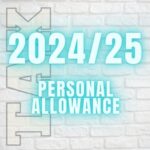 The Chancellor of the Exchequer, Jeremy Hunt, has just announced the details of the autumn statement for 2023 and among the changes was a decrease in National Insurance rates for employed and self-employed people but what is the personal allowance for 2024/25 and has that been increased? Continue reading What is the Personal Allowance for 2024/25?
The Chancellor of the Exchequer, Jeremy Hunt, has just announced the details of the autumn statement for 2023 and among the changes was a decrease in National Insurance rates for employed and self-employed people but what is the personal allowance for 2024/25 and has that been increased? Continue reading What is the Personal Allowance for 2024/25?
Category Archives: Personal Allowance News
Is the Personal Allowance Increasing in 2023?
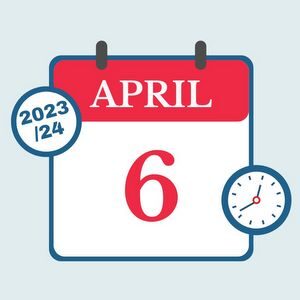 The personal allowance is the amount that you can earn each year before you are subject to tax. It has remained pretty static in the last few years but is the personal allowance increasing in 2023?
The personal allowance is the amount that you can earn each year before you are subject to tax. It has remained pretty static in the last few years but is the personal allowance increasing in 2023?
Continue reading Is the Personal Allowance Increasing in 2023?
Tax Changes September 2022
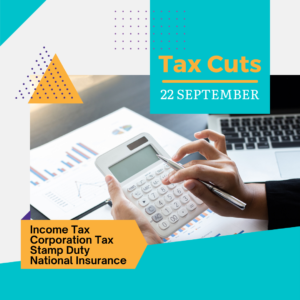 The Chancellor of the Exchequer, Kwasi Kwarteng, announced today (23rd September 2022) that there would be changes to tax rates from April 2023. The September 2022 tax changes were: Continue reading Tax Changes September 2022
The Chancellor of the Exchequer, Kwasi Kwarteng, announced today (23rd September 2022) that there would be changes to tax rates from April 2023. The September 2022 tax changes were: Continue reading Tax Changes September 2022
Personal Allowance Freeze for 5 Years
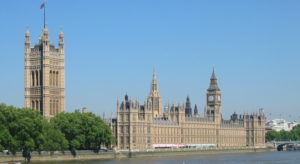
In the budget today (3rd March 2021) the Chancellor of the Exchequer, Rishi Sunak, confirmed the the personal allowance for 2021/22 would increase to £12,570 as had previously been confirmed.
However, he also confirmed that, in order to start to claw back some of the massive spending that needed to happen in order to finance payments during the coronavirus pandemic, the personal allowance would remain frozen at that level until April 2026.
The personal allowance is the amount of money that can be earned before tax is paid. Once the level is passed, anyone who earns over £12,570 will need to pay tax at 20% for the amount of earnings between the personal allowance and the higher rate tax bracket.
In addition to this, the 40% tax bracket starting point, which will be increased slightly to £52,270 on 6th April 2021, will also be frozen for 5 years and will not be increased until at least 2026.
This means that as people start to see pay rises over the coming years, they may be pushed into a situation where they pay more tax or move into a higher tax bracket.
This announcement came alongside confirmation that the furlough scheme will be extended as will the SEISS scheme for the self-employed, plus there will be an extra £20 a week for those on Universal Credit and Working Tax Credit for the first 6 months of the 2021/22 tax year.
The stamp duty holiday will also be extended to the end of June with a partial amount also being available until the end of September.
The Capital Gains Tax allowance was also included in the budget and it was confirmed that this would increase to £12,300 for the tax year 2021/22 and then also remain at that level for 5 years until 2026.
Personal Allowance 2021/22
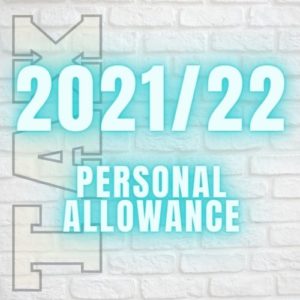 The government has published the personal allowance for 2021/22 on its website and as such has confirmed that it will increase by the increase in the Consumer Prices Index for September 2020 which stood at 0.5%.
The government has published the personal allowance for 2021/22 on its website and as such has confirmed that it will increase by the increase in the Consumer Prices Index for September 2020 which stood at 0.5%.
The personal allowance is the amount of money that each person can earn before paying tax on their earnings (assuming you have the standard personal allowance figure). For any earnings in the tax year above this figure, tax at the standard or higher rate needs to be paid.
As the personal allowance for 2020/21 was £12,500 (and had been for 2019/20 as well), the increase brings it up to £12,570 per annum.
This is a very small increase and will mean only a saving of £14 a year for a basic rate tax payer. For higher rate tax payers the saving will be higher depending on their earnings.
Other tax allowances for the different tranches of tax rates have also been increased by the same CPI rate (0.5%) and you can find these updated figures on the UK tax rates at a glance page.
The new personal allowance will reflect in the standard tax code for employees who do not have any other special tax allowances – giving a tax code of 1257L for the tax year 2021/22.
2019 Personal Allowance
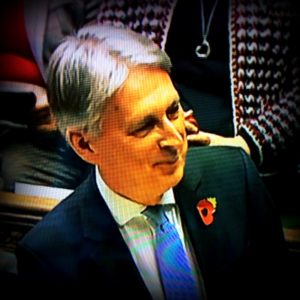
In the 2019 Budget today Philip Hammond announced changes to the personal allowance for 2019/20.
It had previously been announced that the plan was to increase the tax free personal allowance to £12,500 and the higher rate allowance threshold to £50,000 from April 2020.
There had been rumours prior to the budget that the Chancellor would have to delay the increase in the personal allowance in order to fund increases to the NHS.
Mr Hammond commented on this himself and said that he had been advised that the least painful way to add some funding to the NHS promises was to do exactly that.
However, he also said that this was not his idea of ending austerity (which was part of the budget headlines) and so he would not be doing that. In fact, he said, he would actually bring forward the increases in the personal allowance levels by a year and implement those increases from April 2019 instead of April 2020.
So the personal allowance from April 2019 will be £12,500 which is increased from £11,850 for 2018/19, an increase of £650 and a saving of £130 a year for basic rate taxpayers.
Personal Allowance 2018/19

Budget 2017
The Chancellor Philip Hammond has announced in his 2017 Budget today that the UK personal allowance 2018/19 will increase with effect from April 2018 to £11,850.
This is the amount that people can earn before having to pay any tax on earnings above that level.
An increase of £350 in the personal allowance means an extra £70 a year (or £5.83 a month) in the pocket of a basic rate tax payer.
Currently the personal allowance sits at £11,500 for the year 2017/18 and so this is an increase of 3.04%.
The eventual aim that has been proposed by the government is to get the personal allowance to £12,500 a year.
The higher rate tax bracket will also be increase from £45,000 to £46,350. The aim is for this to be increased eventually to £50,000.
You can find all of the current personal allowance rates in the tables on this page (these will be updated as they are announced).
Also announced in the Budget today was the increase in the National Minimum Wage of 4.4%, rising from £7.50 an hour to £7.83 an hour with effect from April 2018.
October 2018 Update
Check out the change to the personal allowance for 2019/2020 here.
Minor Trading Allowances 2017/18
In the tax year 2017/18 the government will be introducing a new UK tax allowance for minor trading and property activity.
The allowance for each category is £1,000 and this means that individuals (who the government classes as self-starters) who have earnings under these two categories can earn up to the allowance and not pay tax on those earnings.
The allowances are also available to those people who earn more than £1,000 in each category, in which case those people will be able to earn the first £1,000 tax free.
The allowance is aimed at the entrepreneurial people in today’s society who aim to make some extra money on the side by doing things like renting out their driveway or selling goods on eBay.

But it is not just limited to these activities and could include for example people making and selling cakes in their spare time or those who make money buying and selling items at car boot sales. It could also cover people who rent out their garage or perhaps some land and those people who do some paid gardening or DIY work at weekends.
Anyone whose earnings are less than £1,000 a year in these categories will not need to fill in a tax return to declare any of this income but people earning over £1,000 will need to declare those earnings and deduct the £1,000 allowance from the income which would be taxable.
Another prime example would be people who use AirBnB to rent out rooms in their house (but not those who use the rent a room allowance to claim tax relief).
Both reliefs are available so if you have earnings in both categories you can claim up to £2,000 in these additional allowances.
Autumn Statement Confirms Increase in Personal Allowance
The Chancellor of the Exchequer, Philip Hammond, today confirmed in his 2016 Autumn Statement that the personal allowance, which currently stands at £11,000 per annum for the tax year 2016/17, will be increased as per the announcements in previous budgets.
The personal allowance is the amount that an individual may earn before they have to start paying tax.
The increases that were previously announced mean that the personal allowance will be £11,500 starting from April 2017 for the tax year 2017/18 and will increase to £12,500 by the end of the current parliament.
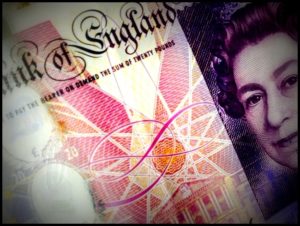 Anyone who earns more than £11,500 currently (but less than £100,000) will benefit from the £500 increase in the personal allowance as follows:
Anyone who earns more than £11,500 currently (but less than £100,000) will benefit from the £500 increase in the personal allowance as follows:
Those who pay tax at the basic rate (currently 20%) will be £100 a year (around £8.33 a month) better off with the increase in the personal allowance.
Those who are subject to 40% tax will see £200 a year (£16.66 a month) more in their pay packets (plus any benefit they may gain from the increase in the 40% tax rate bracket).
There were rumours that the Chancellor may bring in the £12,500 personal allowance quicker than had previously been planned but this did not happen as it was confirmed this would likely be in the 2020s.
Once the personal allowance gets to £12,500 it will be increased in each year in line with inflation, unless any further increases are announced in subsequent budgets.
It was also announced that the Spring Budget will be the last budget at that time of year and that in 2017 the budget will move to being an autumn budget and there will be a subsequent spring statement, thus giving plenty of notice before any changes are introduced in the following April.
Personal Allowance Increased for 2017/18
The Chancellor of the Exchequer, George Osborne, today announced in his March 2016 Budget an increase in the personal allowance for 2017/18 which for 2016/17 stands at £11,000.
The personal allowance for 2017/18 has been set at £11,500 which is an increase of 4.5% over the previous year. This increase is to keep in line with the plan that the Conservative Party announced in the election manifesto to increase the personal allowance by the end of their term to £12,500.
This single level personal allowance now applies to people of all ages, including those over 75, as the age allowance for pensioners has been removed so that everyone is entitled to the same personal allowance.
